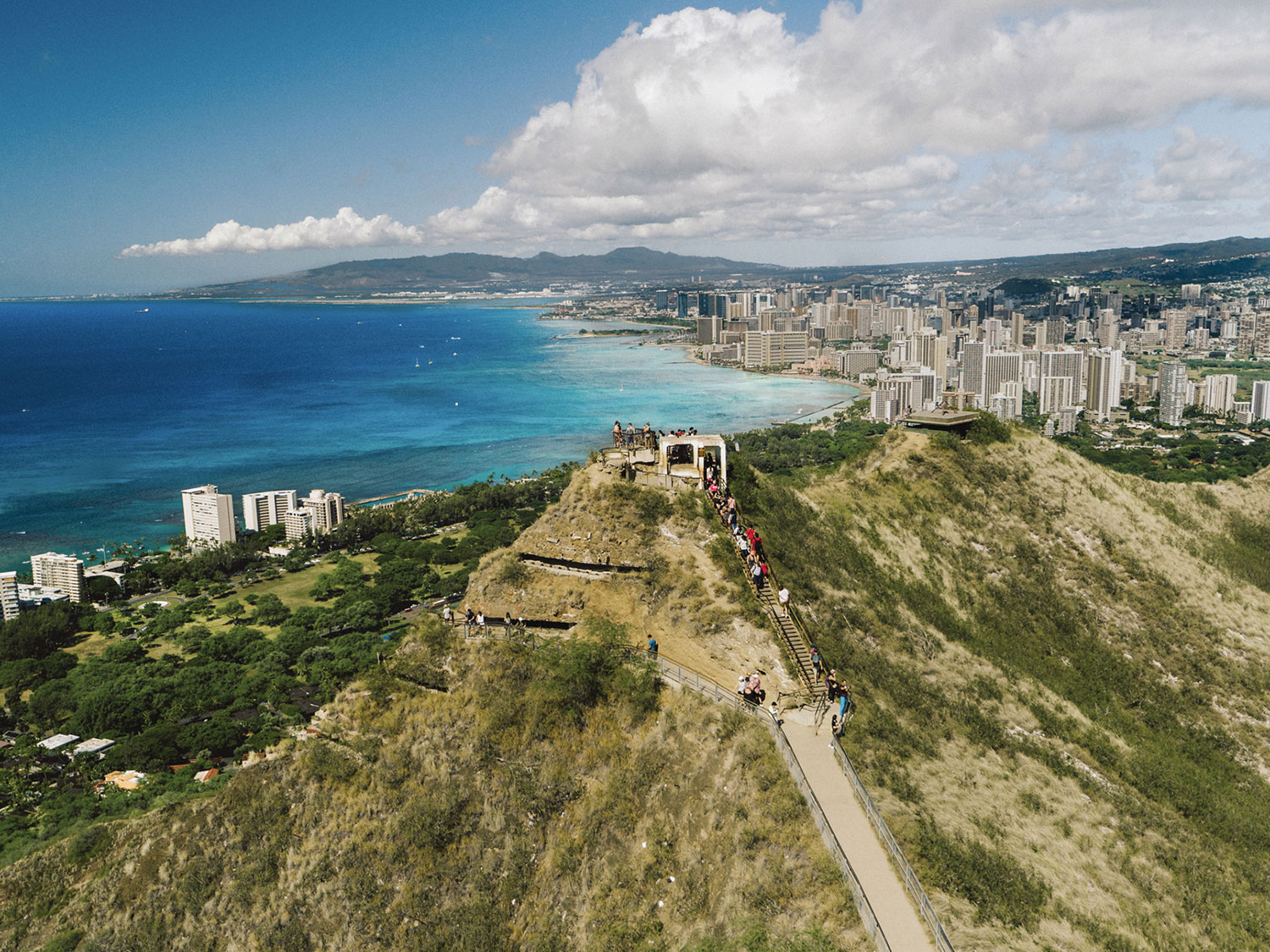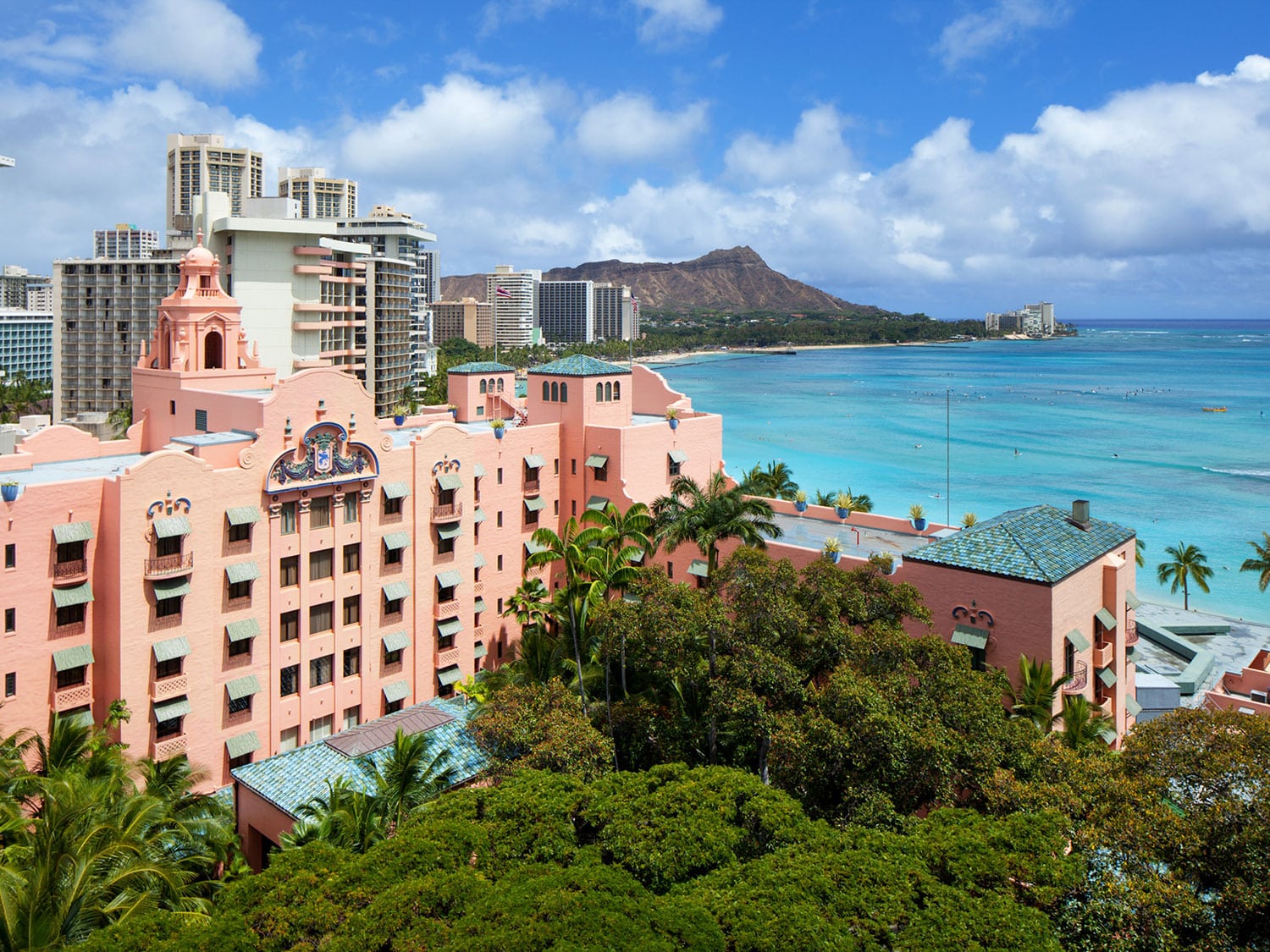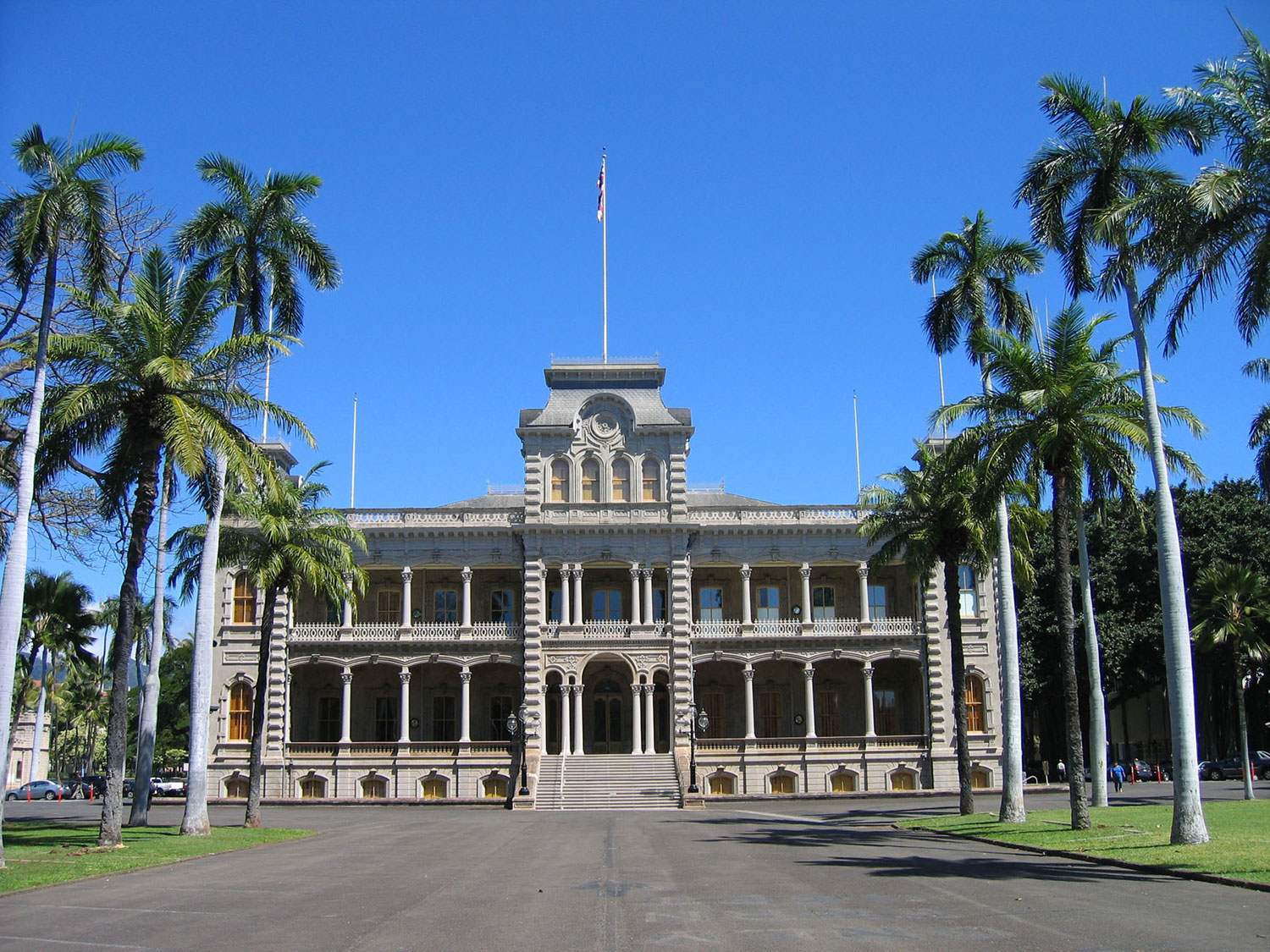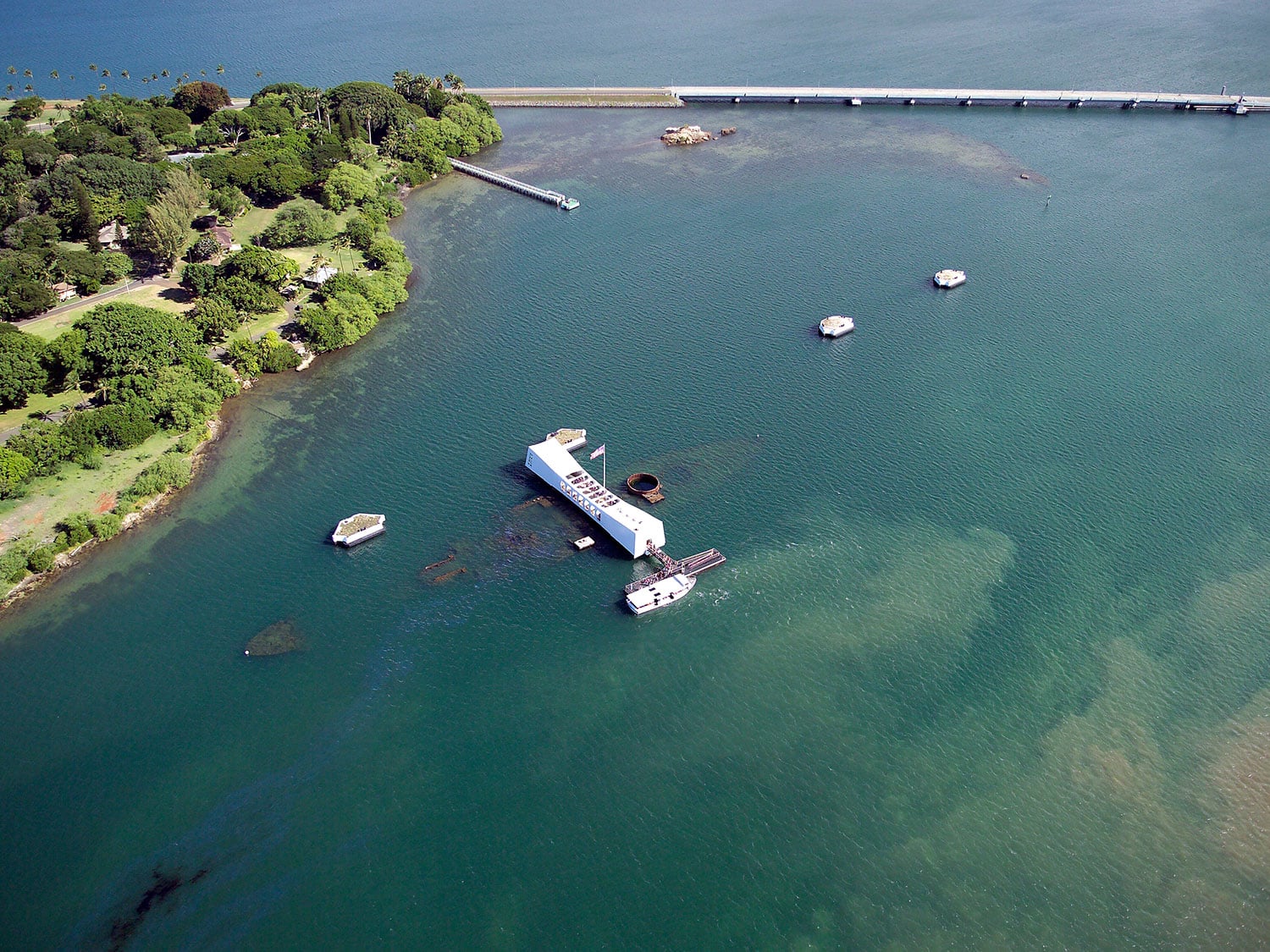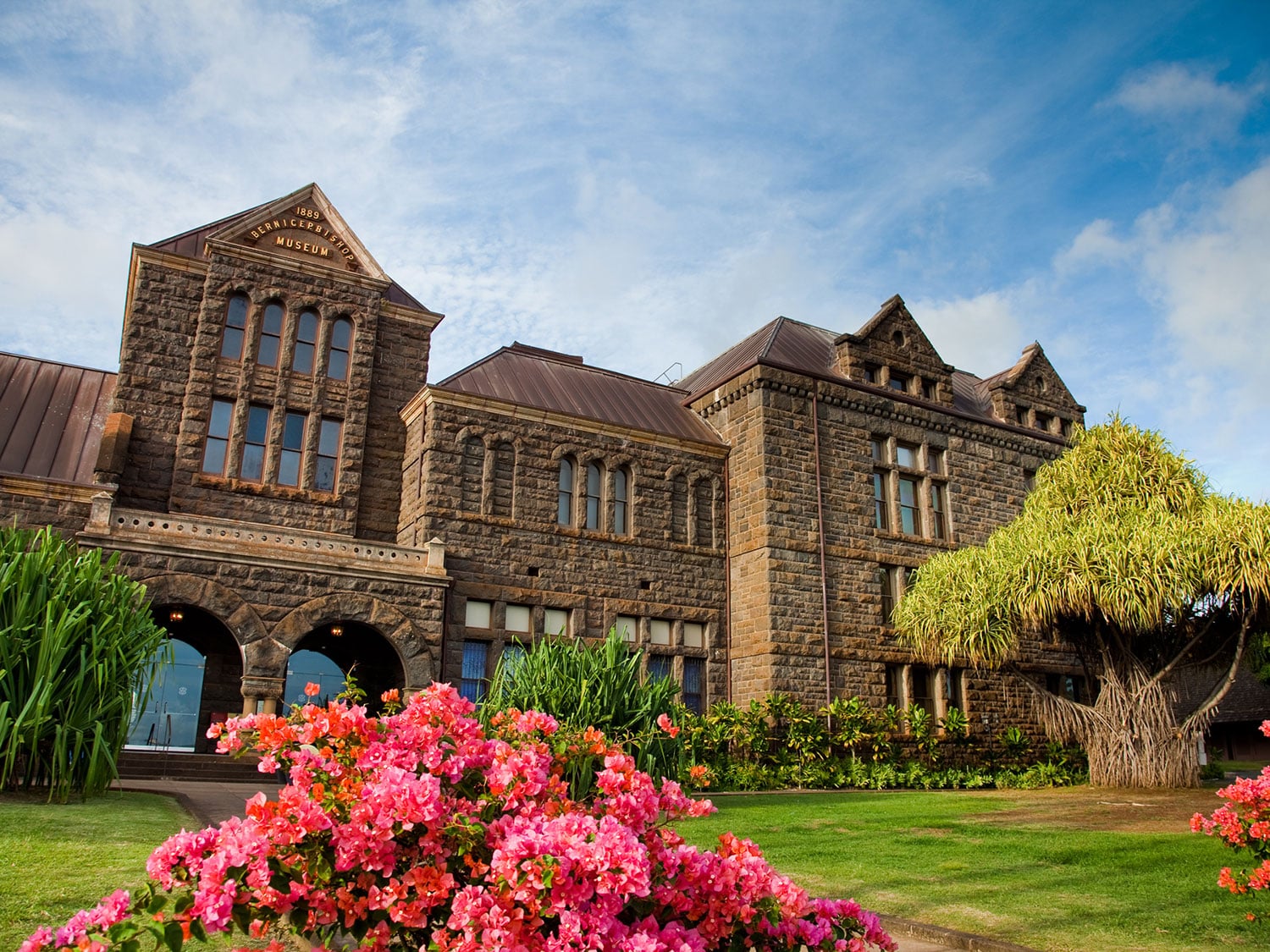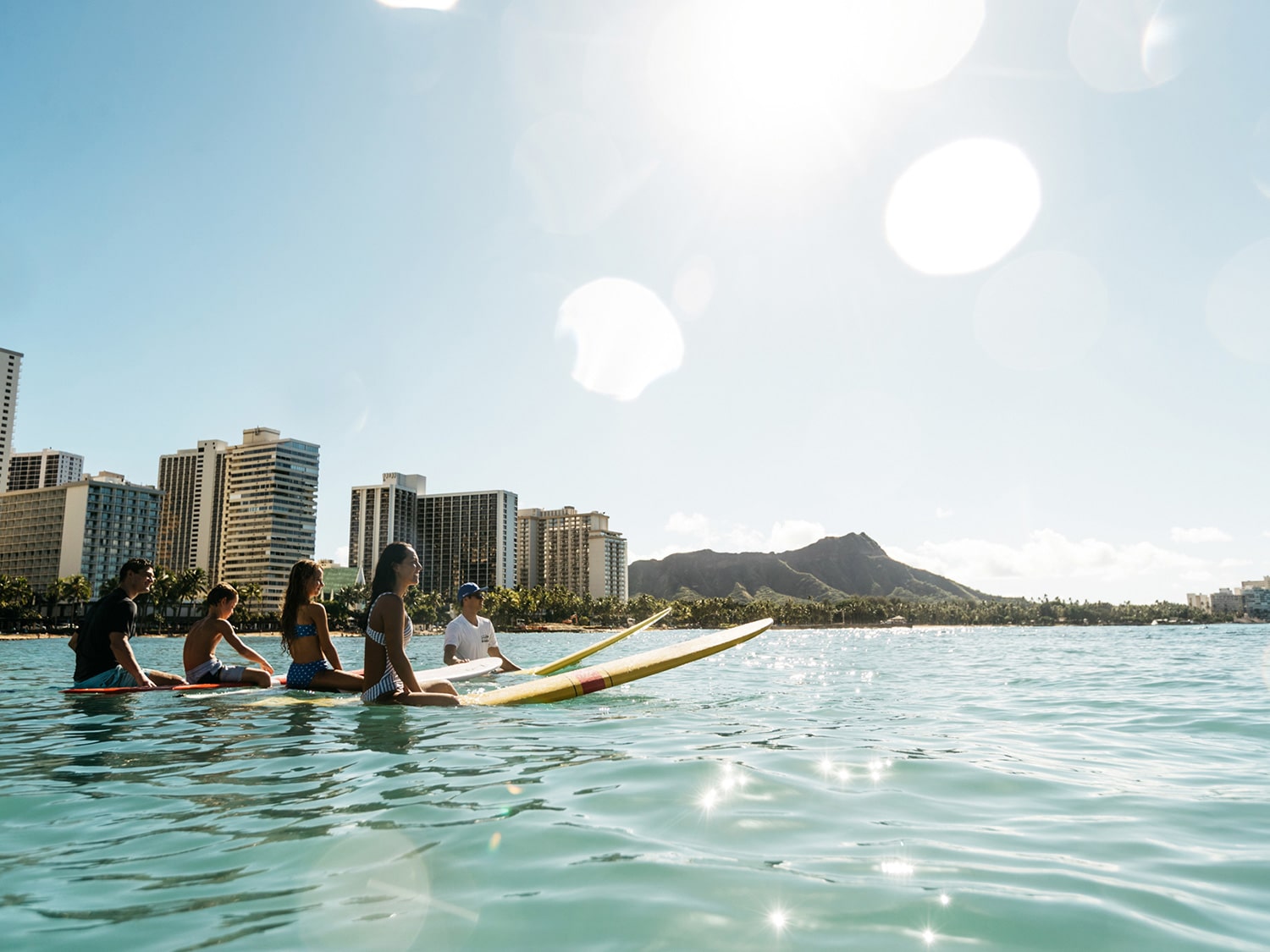7 Ways To Experience Historic Honolulu And Waikiki
Look beyond the big city vibes and tourist hotspots to discover the rich culture of this popular destination.
Honolulu may be a modern city with gleaming skyscrapers, chic designer shops, and a population nearing one million, but beneath its 21st century veneer there's a vibrant—and at times tragic—history to be experienced. From the treasured traditions of its native Hawaiian people to the dawn of surfing to the bombing of Pearl Harbor on Dec. 7, 1941, the city's history is complex and compelling.
Honolulu, which means "protected bay" in the Hawaiian language, was named by King Kamehameha III as the capital of the Hawaiian kingdom in 1845. Waikiki ("spouting fresh water"), with its gentle surf and perfect view of Diamond Head (called Le'ahi, meaning "point of the tuna fish" in the Hawaiian language) was a popular gathering spot for Hawaiian royalty. While enjoying all that this sunny resort destination offers, take time to delve into its history, too.
Here are seven ways to embrace the Honolulu and Waikiki of the past.
Stay in one of Waikiki’s oldest hotels
Surround yourself with history by booking a stay in one of Waikiki's legendary beachfront hotels: Moana Surfrider, A Westin Resort and Spa, which opened in 1901 and is credited with the birth of Hawaiian tourism, or The Royal Hawaiian, A Luxury Collection Resort, which debuted in 1927. Both have plenty of stories to tell.
The 793-room Moana Surfrider, built in Victorian style (with a touch of Italian Renaissance added in 1918) and featuring comfy rocking chairs on its grand front lanai overlooking Kalakaua Ave., is known as "The First Lady of Waikiki." The property is indeed elegant, with historic details in its airy public lobby and in its beachfront Banyan Courtyard, which is home to a massive 118-year-old banyan tree.
One can book a Historic Banyan room in the original building, but there's ample nostalgic ambience in the hotel's public spaces, so rooms in the circa-1969 Tower Wing, especially those on higher floors, are recommended for their sweeping views of Waikiki's famous arc of golden sand and landmark Diamond Head.
Also offering a historic nod is a lobby photo and memorabilia exhibit honoring Duke Kahanamoku (1890-1968), the famed three-time gold medal Olympic swimmer and champion of the sport of surfing, who frequented the hotel's beach and restaurants. Be sure to visit the striking, lei-draped bronze statue of him just to the right of the hotel as you exit.
Nearby, the enigmatic Royal Hawaiian is a Spanish-Moorish-style landmark known as the "Pink Palace of the Pacific." Having just celebrated its 95th birthday on Feb. 1, the 528-room property lives up to its regal name with splendid wood and tile décor, plush area rugs, 14 acres of verdant gardens and beachfront, and expansive suites overlooking the sea.
It was actually built on the grounds where Hawaii's King Kamehameha had his home. Guests who stay on a Tuesday or Thursday can join the Historical Tour at 1:00 p.m., which details architectural elements (including how the hotel got its distinctive color), which kings and queens the property has hosted, and how the Royal Hawaiian (along with the Moana Surfrider) was a rest-and-relaxation center for U.S. Navy sailors during World War II.
The historic building, which houses 400 rooms and suites with vintage art and furnishings, has been joined by the 17-story Mailani Tower with rooms and suites featuring more modern décor and ocean-facing private lanais. The hotel is also home to the famous Mai Tai Bar, which offers views of Diamond Head and nightly music by Hawaiian entertainers.
Learn about Hawaii’s royal past at Iolani Palace
The only royal palace in the United States, Iolani Palace was from 1882 to 1893 the residence of Hawaii's last two monarchs, King Kalakaua and his sister and successor, Queen Liliuokalani, just before the U.S. overthrew the monarchy in 1893, established a provisional government, and annexed the Hawaiian Islands as a U.S. territory in 1898. The downtown Honolulu building, inspired by European architecture and featuring Hawaii's first electric lights and flush toilets, then served as a prison for Liliuokalani, who was detained in an upstairs bedroom for eight months.
Restored and opened as a museum in 1978 (it has served as the state capital building from when Hawaii became the 50th state in 1959 until 1968), Iolani Palace is home to a throne room, Grand Hall, and royal living quarters. A magnificent carved Hawaiian koa wood grand staircase is a highlight. There's also a trove of royal regalia, including the golden crowns used during coronation ceremonies, historic photographs and portraits. The palace is open Tuesday to Saturday and there are both self-guided audio tours and docent-led tours.
Other historic sites in downtown Honolulu include the circa-1883 statue of King Kamehameha I and a circa-1982 statue of Queen Liliuokalani (they are directly across the street on opposite sides of the Palace) and the Hawaii State Art Museum, constructed in 1928.
Pay respect at Pearl Harbor
Located between downtown Honolulu and Daniel K. Inouye International Airport, Pearl Harbor remains an active military base, but visitors are welcome to tour and learn about the details of Dec. 7, 1941, when Japanese aircraft bombed the U.S. fleet and entered the United States into World War II. There are moving memorials to the three battleships that were lost that day—the USS Arizona, USS Oklahoma, and USS Utah (a total of 16 were damaged)—and the 2,403 servicemen and civilians who died.
The USS Arizona Memorial, a striking white marble structure that spans the submerged battleship that is the final resting place of 1,177 officers and crewman, is especially poignant. During a tour of Pearl Harbor, visitors can also board and tour the USS Missouri, which wasn't even built at the time of the attack but is distinguished as the battleship upon which the Japanese surrendered on Sept. 2, 1945, ending WWII. Onboard photographs capture the moment as visitors stand on the place where it happened. In addition, there are memorials to the USS Oklahoma and USS Utah and the Pearl Harbor Aviation Museum features 50+ vintage aircraft and other historic memorabilia.
A related site, the National Memorial Cemetery of the Pacific, a somber yet serene space located inside Punchbowl crater, is the final resting place for more than 13,000 soldiers who died during WWII.
Visit the Bishop Museum
There are hundreds of thousands of red and yellow feathers, each plucked from a living I'iwi or mamo bird, in the treasured ceremonial cape once worn by King Kamehameha I that's on display in the Bishop Museum, the Honolulu institution that protects and preserves Hawaii's rich cultural and biological heritage.
Founded in 1889 by Charles Reed Bishop to honor his late wife, Princess Bernice Pauahi Bishop (the last descendant of the royal Kamehameha family), the museum is housed in the original Kamehameha School for Boys and its dramatic Polynesian and Hawaiian halls are filled with collections of cultural artifacts, Hawaiian botanicals, marine species, insects, and other natural curiosities.
Take surfing lessons or enjoy an exhilarating outrigger canoe ride
Surfing has its origins in the South Pacific and has been a pastime in Hawaii for more than 300 years. In the 1920s, Duke Kahanamoku and his "Beach Boys" popularized the sport—and Duke would want you to learn to surf, right? If so, Waikiki's gentle, rolling waves are the perfect setting and several surf companies offer beginner lessons. There are more than a dozen companies offering lessons, including Hans Hedemann Surf School, Moniz Family Surf, and Ty Gurney Surf School—so slather on some sunscreen and attempt to hang 10 in of Hawaii's most popular surf spots.
If your balance leaves something to be desired, you can still feel the rush of riding a wave toward Waikiki Beach by paddling out in a multi-person outrigger canoe and then "surfing" back while humming the theme song from Hawaii Five-0. You can book rides with Waikiki Beach Services, Star Beach Boys or Big Wave Dave.
Hike to the summit of Diamond Head
For a bird's eye view of Waikiki, energetic visitors can lace up their sneakers, don a hat, and hit the hiking trail at Diamond Head State Monument (and don't forget to bring along water). It's 1.6 miles roundtrip and takes about 90 minutes, with a 560-foot gain in altitude along a mix of rocky switchback trails and steep stairs as you approach the summit—which is home to historic tunnels and fire safety bunkers that were used as lookouts during WWII.
Reservations ($5 per person, plus a parking fee of $10 per vehicle) are now required for all non-resident visitors; reserve an early entry time to avoid crowds and excessive heat. For a detailed description of the hike itself, check here.
Enjoy free cultural events at The Royal Hawaiian Center
Yes, it's a shopping mall, but the Royal Hawaiian Center, located steps from the beach in Waikiki, is also known for its roster of free cultural activities and events, which include everything from hula, ukulele and lei-making lessons to cultural performances featuring Hawaiian singers, dancers and musicians.
